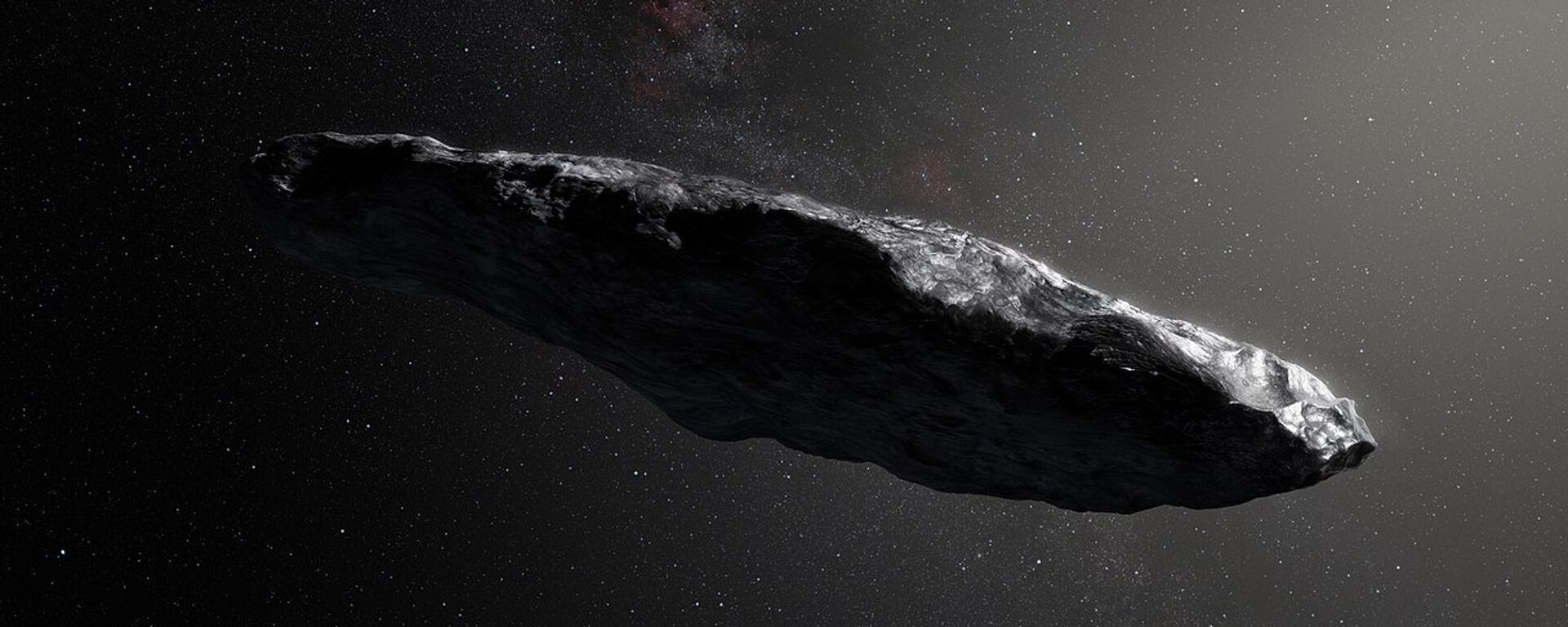https://sputnikglobe.com/20230902/astrophysicist-claims-material-found-on-ocean-floor-originated-from-beyond-our-solar-system-1113066126.html
Astrophysicist Claims Material Found on Ocean Floor Originated From Beyond Our Solar System
Astrophysicist Claims Material Found on Ocean Floor Originated From Beyond Our Solar System
Sputnik International
While the discovery may seem exciting, many fellow astronomers are skeptical of the find.
2023-09-02T03:16+0000
2023-09-02T03:16+0000
2023-09-02T03:14+0000
beyond politics
astronomy
science & tech
research
research
astronomers
space
space exploration
meteor
pacific
https://cdn1.img.sputnikglobe.com/img/107793/68/1077936853_1:0:1919:1079_1920x0_80_0_0_1fa057f7e650fea4d8fa55fd9ee0343b.jpg
Fragments found on the ocean floor off the coast of Papua New Guinea and recovered in June are believed to have initially emerged from beyond our solar system, a new yet-to-be peer-reviewed study recently detailed.According to Harvard University astronomer Avi Loeb, who founded the Galileo Project in 2021, the fragments come from a meteor traced by US government satellites before it fell to the Pacific in 2014. The meteor, classified as IM1, initially attracted attention because of its strange velocity.Loeb and his team analyzed what were essentially grains of sand, with some measuring 0.05 to 1.3 millimeters in diameter. They studied at least 57 of these tiny bead-like particles using rare-earth magnets. The researchers subsequently determined the particles had variations in isotopes of iron consistent with the meteorite’s damaging travels through Earth’s atmosphere.The group then found that the particles were rich in the metals beryllium (Be), lanthanum (La), and uranium (U). This particular ratio of metals is incredibly rare, the study says, which suggests it comes from a location far beyond Earth's solar system.However, the study has been met with its fair share of criticism from fellow researchers in the field. Loeb, who is considered a controversial figure, does not shy away from the topic of extraterrestrials; in fact, he inflames the curiosity surrounding that debate. In 2018, he published a paper claiming Earth was visited by extraterrestrials in 2017 after the emergence of a mysterious interstellar object named 'Oumuamua.Critics of Loeb have said he is submitting to sensationalism, rather than actual science.Despite being hopeful that someday there will be evidence of aliens, Dr. Matthew Genge, from the Imperial College London, is skeptical about the discovery.“There are tens of thousands of different alloys and I'd suspect they haven't compared them all, particularly when some, for example in military hardware, are classified,” he added. “Furthermore, these are spherules, thus formed by melting and mixing of materials, making new, odd compositions.”“People are sick of hearing about Avi Loeb’s wild claims,” added Steve Desch, an astrophysicist at Arizona State University, told a New York journal in July after Loeb first detailed his findings. “It’s polluting good science — conflating the good science we do with this ridiculous sensationalism and sucking all the oxygen out of the room.”
https://sputnikglobe.com/20181107/comet-alien-craft-speculations-1069601469.html
pacific
pacific ocean
Sputnik International
feedback@sputniknews.com
+74956456601
MIA „Rosiya Segodnya“
2023
Mary Manley
https://cdn1.img.sputnikglobe.com/img/07e6/01/0b/1092187887_0:0:2048:2049_100x100_80_0_0_0c2cc4c84f89aff034cc55bb01fb6697.jpg
Mary Manley
https://cdn1.img.sputnikglobe.com/img/07e6/01/0b/1092187887_0:0:2048:2049_100x100_80_0_0_0c2cc4c84f89aff034cc55bb01fb6697.jpg
News
en_EN
Sputnik International
feedback@sputniknews.com
+74956456601
MIA „Rosiya Segodnya“
Sputnik International
feedback@sputniknews.com
+74956456601
MIA „Rosiya Segodnya“
Mary Manley
https://cdn1.img.sputnikglobe.com/img/07e6/01/0b/1092187887_0:0:2048:2049_100x100_80_0_0_0c2cc4c84f89aff034cc55bb01fb6697.jpg
research, astronomy, space, space exploration, extraterrestrial, pacific ocean, galileo project, avi loeb, meteor im1
research, astronomy, space, space exploration, extraterrestrial, pacific ocean, galileo project, avi loeb, meteor im1
Astrophysicist Claims Material Found on Ocean Floor Originated From Beyond Our Solar System
As the materials are heavily enriched in the metals beryllium (Be), lanthanum (La), and uranium (U), it serves as a big clue that they are not made up of the same content one would find in our own solar system.
Fragments found on the ocean floor off the coast of Papua New Guinea and recovered in June are believed to have initially emerged from beyond our solar system, a new yet-to-be peer-reviewed
study recently detailed.
According to Harvard University astronomer Avi Loeb, who founded the Galileo Project in 2021, the fragments come from a meteor traced by US government satellites before it fell to the Pacific in 2014. The meteor, classified as IM1, initially attracted attention because of its strange velocity.
Loeb and his team analyzed what were essentially grains of sand, with some measuring 0.05 to 1.3 millimeters in diameter. They studied at least 57 of these tiny bead-like particles using rare-earth magnets. The researchers subsequently determined the particles had variations in isotopes of iron consistent with the meteorite’s damaging travels through Earth’s atmosphere.
The group then found that the particles were rich in the metals beryllium (Be), lanthanum (La), and uranium (U). This particular ratio of metals is incredibly rare, the study says, which suggests it comes from a location far beyond Earth's solar system.
“This is a historic discovery because it represents the first time that scientists analyze materials from a large object that arrived to Earth from outside the solar system,” Loeb
wrote in his report.
However, the study has been met with its fair share of criticism from fellow researchers in the field. Loeb, who is considered a controversial figure, does not shy away from the topic of extraterrestrials; in fact, he inflames the
curiosity surrounding that debate. In 2018, he published a paper claiming Earth was visited by extraterrestrials in 2017 after the emergence of a mysterious interstellar object named 'Oumuamua.

7 November 2018, 17:32 GMT
Critics of Loeb have said he is submitting to sensationalism, rather than actual science.
Despite being hopeful that someday there will be evidence of aliens,
Dr. Matthew Genge, from the Imperial College London, is skeptical about the discovery.
“The seafloor is littered with spherules, some natural and some artificial, from satellite debris, rocket exhaust, windblown material from industry, or even nuclear tests. You can find all sorts of odd particles in the deep,” he told an online news outlet.
“There are tens of thousands of different alloys and I'd suspect they haven't compared them all, particularly when some, for example in military hardware, are classified,” he added. “Furthermore, these are spherules, thus formed by melting and mixing of materials, making new, odd compositions.”
“People are sick of hearing about Avi Loeb’s wild claims,” added Steve Desch, an astrophysicist at Arizona State University, told a New York journal in July after Loeb first detailed his findings. “It’s polluting good science — conflating the good science we do with this ridiculous sensationalism and sucking all the oxygen out of the room.” 





